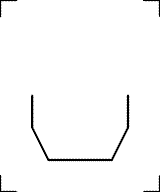Rotational molding
Rotary molding is a plastic processing method for hollow bodies in which a melt solidifies on the wall in a rotating tool .
Procedure
By means of biaxial rotation and heating, powdered thermoplastic is deposited layer by layer on the inner surfaces of the mold in thin-walled hollow body molds . As a result, relatively uniform wall thicknesses of 2 to 15 mm can be achieved.
Rotary molding has the following advantages over blow molding or injection molding :
- simple tools and low tool costs
- Economy for small and medium-sized series from 20 to 2,000 pieces / year
- large possible volumes up to 6,000 liters
- possible complex shapes with openings, continuous connections, threads, inserts, etc.
- uniform wall thicknesses
- seamless hollow body
Investments
The systems used for rotational molding can be classified as follows:
- Single shot machines in which the entire process, from loading the molds, preheating, heating, cooling to molding, takes place step by step. Also possible as multi-armed carousel systems , in which the loading and forming takes place simultaneously with the carrier in the oven. The advantages of these systems are the better utilization of the process time, but the disadvantage is the lower flexibility in the combination of different part sizes, as well as the significantly increased space requirement.
- Rock n 'Roll systems are single -shot systems that only rotate in the main axis, but only perform a tilting movement in the secondary axis. Such systems are mainly used for cylindrical, elongated parts.
All system types can be heated with infrared or gas , depending on the manufacturer . The process courses and temperatures depend on the part geometry, the plastic used, the required wall thickness and the mold material. Cooling is mostly done by means of air blowers and, under certain conditions, also with sprayed water mist.
Rotating shapes
Experience with rotating shows that different molding materials can be used. For simple, angular containers, shapes are inexpensively manufactured from sheet steel or sheet aluminum . For complex, rounded and curved moldings, however, the rotational molds are more simply cast in aluminum . The master models required for this can be made of wood , metal , plastic , plaster or any other solid material. There are no limits to the design or the dividing lines. Ideally, rotating parts should be well rounded and rounded. By varying the mold wall thickness, the part wall thickness can also be influenced.
The rotary molds can be coated or treated in various processes for better demolding, but also to maintain a constant part quality. The silicones or synthetic resins with Teflon embedding used for this are determined, sprayed on, massaged in or baked in, depending on the requirements for the finished part.
All molds are equipped with steel cages for the machine assembly; special quick-release fasteners are used for efficient handling during demolding and loading.
Limitations of the procedure
Like any production process, rotational molding has process limits. The sometimes unpredictable shrinkage behavior can be kept within tight tolerances with experience for design details. Closely tolerated dimensions of openings, threads and millings must, however, be produced in a conventional manner.
Plastics for rotational molding
The thermoplastics polyethylene (PE, also electrically conductive) and polypropylene (PP) are mainly used . With special equipment on the systems, almost all other thermoplastic products such as polyamide (PA), polycarbonate (PC) and polystyrene (PS) can be used for rotary sintering . In exceptional cases, thermosetting 2-component thermosets are also suitable .
Depending on the plastic, the known strength values are achieved, the other mechanical or chemical characteristics (e.g. UV stability, acid resistance, etc.) are retained or can be set to extreme values.
Most raw materials can be colored in any desired color using high-speed mixing systems (turbo blend). Another coloring process (but the more expensive one) is compounding in the extruder . The higher price is justified by the better mixing, the more intensive coverage and the higher strength values of the material.
The material sections that arise in post-processing can be finely granulated in mills and mixed with up to 30% of the new material. Larger amounts of recycling material (up to 100%) may only be added to the specially designated, not highly resilient regenerated parts.
Applications
This method can be used wherever plastic products are required starting from a hollow body part. These can be tanks of all kinds, housings for machines, transport containers for sensitive goods, leisure and water sports items such as kayaks, furniture and toy parts, safety containers, etc.
Because of the relatively low mold costs, sintering rotation is particularly suitable for small series.



